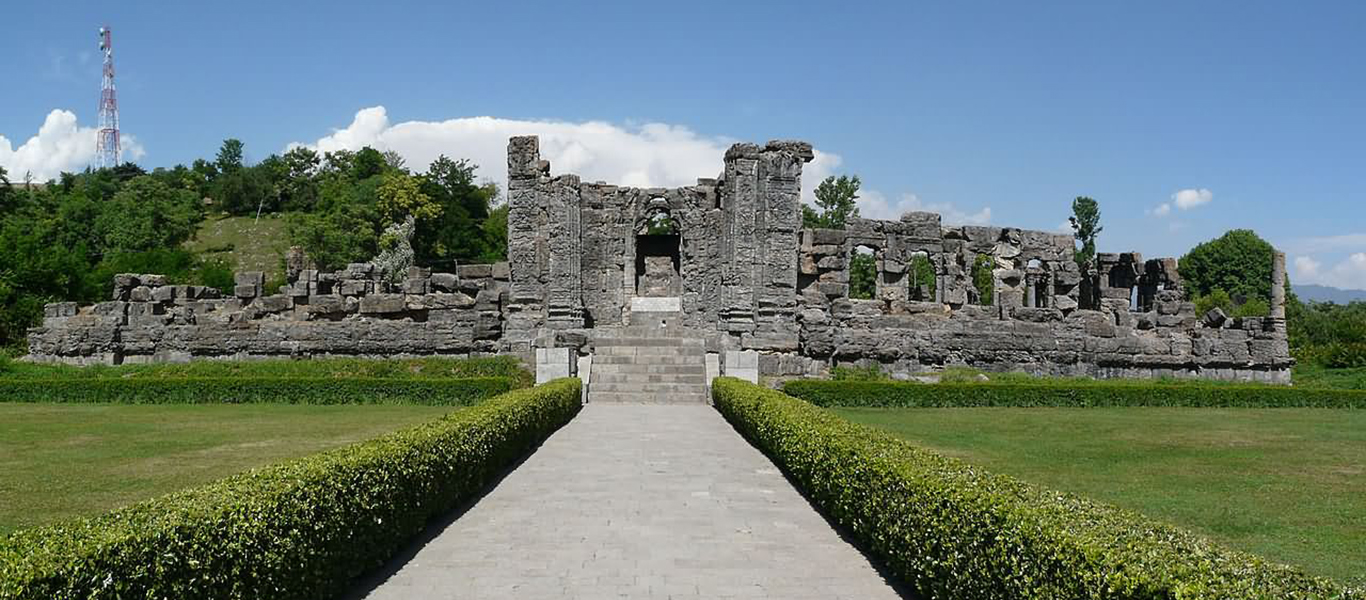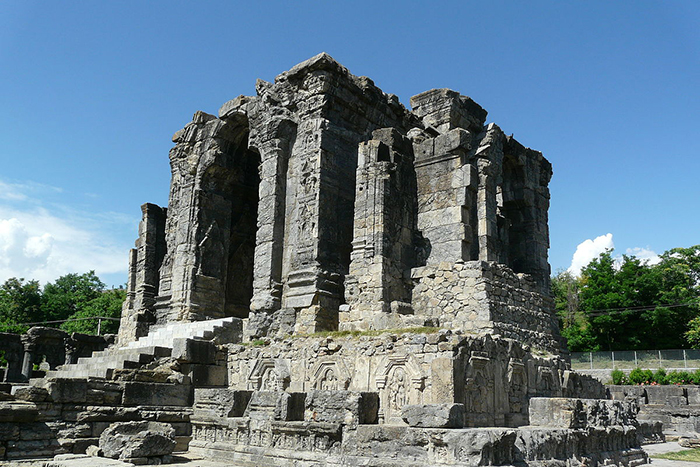

Martand Sun Temple a spectacular shrine dedicated to Surya (the Sun), lies at a distance of over five miles from Anantnag in the heavenly state of Jammu and Kashmir. This structure is a Kashmiri Hindu Temple and is known as one of the most elegant structures ever built in India. Even in a wrecked state, the temple shares it’s story with the ones who genuinely want to listen. The architecture is breathtaking and the vibe somewhat nostalgic but so enticing that it makes travelers want to come here. A walk across the courtyard is a must for visitors to notice the brilliantly fused designs and carvings on the structure that still stand the tests of time and weather. The location is ideal for tourists. Families can spend a few hours here taking photographs and experience the ambience. The temple is like a live laboratory for the students of history, archaeology, architecture and religion. Kids will enjoy the place jumping around stones and playing hide-and-seek – the kids from 8th century AD must be doing the same in the prime of this temple.
The Martand Sun Temple was constructed between the 7th and the 8th century. Martand, in Sanskrit, is another name for the Sun God in Hinduism. The temple complex was built by Lalitaditya who was the third ruler of the Karkota Dynasty. The structure is constructed of limestone, and the entire complex has been built on top of a plateau near Anantnag. The Government of India has opened the ruined temple complex for tourists, and this site is considered to be of National, Historical and Architectural importance and hence comes under The Archaeological Survey of India.
The Temple Complex is so appealing that some legendary projects have featured the location and the mesmerizing ruins. The Bollywood blockbuster movies Aandhi and Haider are some of the projects shot here. When you do visit the site, make it a point to sit without a thought in your mind and relish the tranquility of the temple in the Gorgeous Kashmir Valley.
The Martand Sun Temple was built by King Lalitaditya Muktapida around 8th Century CE. Lalitaditya Muktapida was the third ruler of the Karkota Dynasty. It is believed that the foundation of the temple complex was laid in between 350 and 500 CE and some parts of the structure were also constructed during the reign of Ranaditya, who was the son of Narindraditya of the Gonanda Dynasty III of Kashmir.
Gonanda Dynasty III was the last dynasty of the rulers of the Gonanda line. After the end of their Dynasty, the Karkota Dynasty took over, and the remaining construction of the temple was completed by King Lalitaditya Muktapida in honor of the Sun God, Surya. In most parts of Kashmir, Martand is also known as Mattan.
In some texts, it is stated that the King named the temple Martand as a tribute to the fishermen as fishing and trading were the prominent professions of fishing during his reign. In the 15th century, however, the temple complex was completely demolished on the orders of Sikandar Butshikan, a Muslim ruler in Kashmir. It is said that it took over a year to demolish the grand and sturdy temple complex during that time.
The architecture of the Martand Sun temple is a perfect example of the creative geniuses born in India over centuries. The complex is considered an exceptional specimen of Hindu - Kashmiri architecture that includes influences of the Gupta, Gandharan, Syrian, Chinese, Roman and Greek architectural forms fused brilliantly all over the temple complex. The mesmerizing complex expands over an area of 32,000 square feet and has its entrance in the western side of the complex. The grand entrance is adorned by elaborate as well as intricate carvings of Hindu Deities. The ruined collonaded courtyard of the temple leads to the main shrine of Lord Surya which is located in the centre of the complex. The centre of the complex has a tank like structure with descending stairs. The main shrine has a smaller antechamber that is decorated with beautifully intricate carvings of Lord Vishnu, Ganga and Yamuna - the river goddesses, and the ultimate Sun God, Surya. Archaeologists have tried to restore an impression of the structure that the main shrine must have had centuries ago before it was destroyed. It is believed that the main shrine had a pyramid-shaped pinnacle which is commonly seen on the temples in Kashmir. There are about 83 smaller shrines that surround the main shrine of Lord Surya and are lined up along the perimeter of the complex that was again connected by the gorgeous Greek influenced limestone colonnades. The ruins on the site now show weathered Sanskrit inscriptions, eroded sculptures and carvings depicting the traditional dance postures, musical events and some more deities.